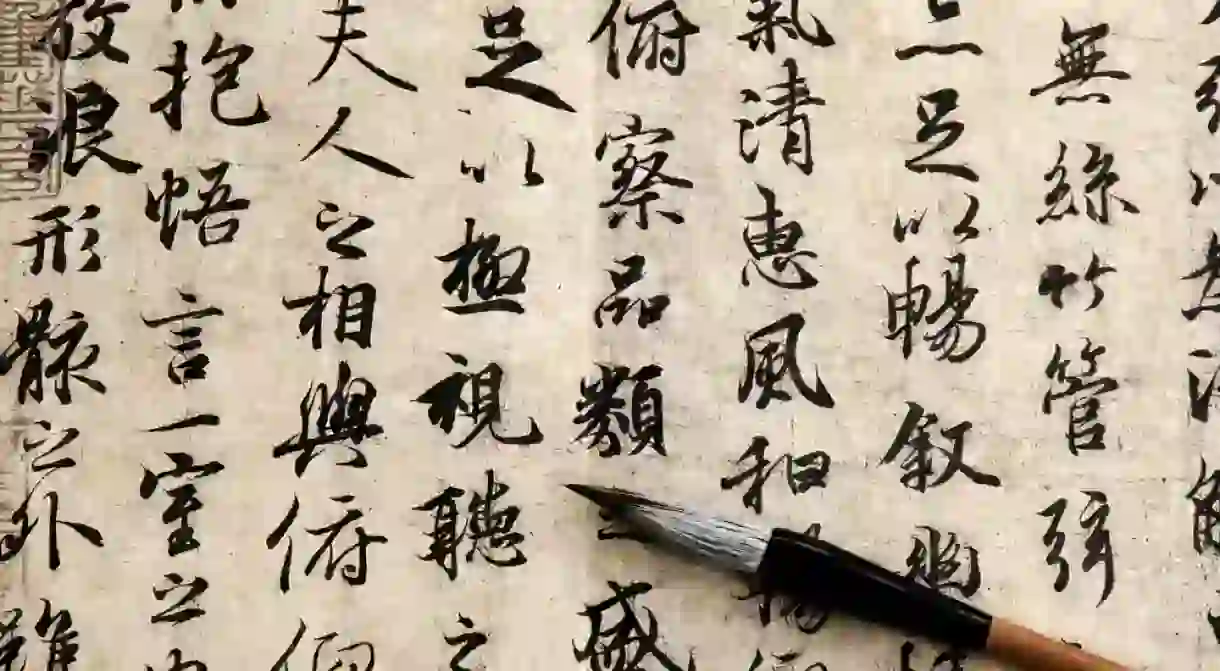10 Beautiful Characters That Will Make You Fall in Love With Chinese

Chinese is a logographic writing system, meaning that every character represents a concept, in contrast to an alphabet, where each symbol represents a sound. The tens of thousands of complex Chinese characters that are in use today are the evolved forms of symbols originating as far back as the 3rd millennium BCE. Here are 10 examples of traditional Chinese characters and the secrets contained within them.
德 dé
Meaning: Virtue, Ethics
Older versions of the character for “virtue” combine 彳and the obsolete 悳 (also pronounced dé). The component 彳 means “to walk” or “to travel,” but it can also suggest “behavior” or “comportment.” Meanwhile, 悳 is composed of the word 直 (zhí), meaning “straight”, and 心 (xīn), meaning “heart”. So 彳+ 悳 means “to walk around with a straight-aiming heart” – in other words, to behave virtuously.

家 jiā
Meaning: Home, Family
The top portion of the character for “home” is 宀, which represents a roof. The bottom part is 豕 (shǐ), an old character for “pig” or “swine.” How did “a pig under a roof” come to mean “home”? In the old days, those who were able to raise pigs were considered well-off, because they had ample food to eat. Thus, the character 家 represents the aspiration of a well-fed household.

安 ān
Meaning: Peace
Here, we see the “roof” 宀 radical again, with the character for woman, 女 (nǚ), underneath it, associating peace with femininity, and suggesting that an ideal household is managed by an assiduous woman. (On the flipside, this can also be interpreted as representing the sexist notion that women belong at home!)

春 chūn
Meaning: Spring
Early versions of the character for “spring” contained the character 屯 (tún), which represents a soft shoot sprouting from the ground, heralding the coming of spring. The bottom part of this character is 日 (rì), which means “sun,” or in this case, “sunshine.”

夢 mèng
Meaning: Dream
An ancient form of this character was composed of the components 目 (mù), meaning “eye,” and 爿, which represents a bed. Combined, they referred to “things seen while sleeping.” Over time, the original character was rotated so the 爿 (which became 艹) now sits on top of the 目, and the elements 宀, which means “under a roof,” and 夕(xī), meaning “evening,” were added.

門 mén
Meaning: Gate, Door
This character neatly represents the two sides of a set of double doors, like the front gates used in ancient China to guard the homes of the wealthy.

永 yǒng
Meaning: Perpetual, Forever
The earliest versions of this character meant “to swim with the current,” which is why it’s related to the homonym 泳 (yǒng), “to swim.” It contains the character 水 (shuǐ), “water,” which is derived from the same ancient pictogram that gave rise to the character 川 (chuān), “river.” The modern meaning of 永 comes from the fact that a great river flows on for vast distances – seemingly forever.

雨 yǔ
Meaning: Rain
The four dash-like strokes in the middle of this character represent raindrops, and the horizontal bar at the top represents the sky. Earlier versions of the character for “rain” consisted simply of this bar with four dashes underneath, but over time it became more complex, eventually transforming into 雨.

寶 bǎo
Meaning: Treasure
The top of this character is a roof, 宀, referring to something that is stored indoors. The bottom component is 貝 (bèi), which in archaic texts means “money” and suggests something valuable. Encapsulated in the middle is the character 珤 (bǎo), an archaic word for “treasure” that can also refer to porcelain or chinaware.

筆 bǐ
Meaning: Pen, Brush
This character is composed of the archaic character 聿 (yù), which represents a hand grasping a thin, vertical writing brush, with an abbreviated form of the character 竹 (zhú), “bamboo,” from which calligraphic brushes were made in ancient China.














